“Go back to Mississippi, go back to Alabama, go back to South Carolina, go back to Georgia, go back to Louisiana, go back to the slums and ghettoes of our northern cities, knowing that somehow this situation can and will be changed. Let us not wallow in the valley of despair.”
~Martin Luther King, Jr.
March On Washington
WARNING: This column contains several graphic photos which some readers may find difficult to view. They are here for one reason. They are visual proof of what evil and hate can do.
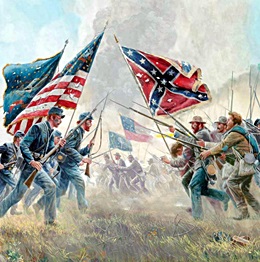
1862 – The Second Battle of Bull Run (also known as Second Manassas) began in Prince William County, Virginia. The three-day battle was the culmination of the Northern Virginia Campaign waged by Confederate Gen. Robert E. Lee’s Army of Northern Virginia against Union Maj. Gen. John Pope’s Army of Virginia.
As Pope waited for George McClellan’s Army of the Potomac in anticipation of a combined offensive, Lee decided to strike first, sending half of his army to hit the Federal supply base at Manassas.
Led by Stonewall Jackson, hero of the First Battle of Bull Run (Manassas) 13 months earlier, the rebels seized supplies and burned the depot, then established hidden positions in the woods. On August 29, Pope’s Federals clashed with Jackson’s men, who held their ground with heavy losses on both sides.
The following day, after the rest of Lee’s army arrived, 28,000 rebels led by James Longstreet launched a counterattack, forcing Pope to withdraw his battered army toward Washington that night.
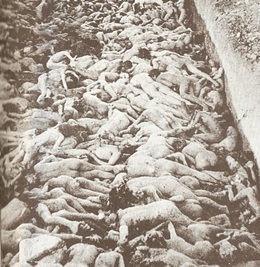
1941 – Tens of thousands of Hungarian Jews had been expelled from that country and migrated to Ukraine. The German authorities tried sending them back, but Hungary would not take them.
SS General Franz Jaeckeln vowed to deal with the influx of refugees by the “complete liquidation of those Jews by September 1.”
He worked even faster than promised.
On this date, he marched more than 23,000 Hungarian Jews to bomb craters at Kamenets Podolsk, ordered them to undress, and riddled them with machine-gun fire. Those who didn’t die from the spray of bullets were buried alive under the weight of corpses that piled atop them.

1955 – While visiting family in Money, Mississippi, 14-year-old Emmett Till, an African-American from Chicago, was brutally murdered for allegedly flirting with Carolyn Bryant, a white woman, four days earlier.
His assailants – Roy Bryant, the woman’s husband and J.W. Milam, her brother – kidnapped the young man from his great uncle’s home and ordered him to take off his clothes. The two men then beat him viciously, gouged out his eye, shot him in the head and then threw his body – tied to a 75-pound cotton-gin fan with barbed wire – into the Tallahatchie River.
Three days later, his corpse was recovered but was so disfigured that Mose Wright – Till’s great uncle – could only identify it by an initialed ring. Authorities wanted to bury the body quickly, but Till’s mother, Mamie Bradley, requested it be sent back to Chicago.
After seeing the mutilated remains, she decided to have an open-casket funeral so that all the world could see what racist murderers had done to her only son. Jet, an African American weekly magazine, published a photo of Emmett’s corpse, and the mainstream media picked up on the story.
Less than two weeks after Emmett’s body was buried, Milam and Bryant went on trial in a segregated courthouse in Sumner, Mississippi. There were few witnesses besides Mose Wright, who positively identified the defendants as Emmett’s killers.
On September 23, the all-white jury deliberated for less than an hour before issuing a verdict of “not guilty,” explaining that they believed the state had failed to prove the identity of the body.
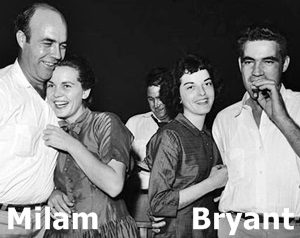
In 2017, Tim Tyson, author of the book The Blood of Emmett Till, revealed in the book that Carolyn Bryant recanted her testimony, admitting that Till had whistled at her, but did not touch, threaten or harass her.
In a report to Congress in March 2018, the U.S. Department of Justice stated that it was reopening the investigation into Till’s death due to unspecified new information. It’s unclear what new charges could result from a renewed investigation. Both Bryant and Milam – who admitted they committed the crimes after their trial – are dead.
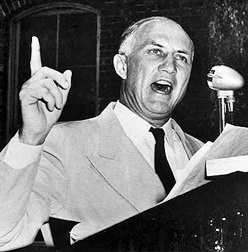
1957 – U.S. Senator Strom Thurmond (D-South Carolina) began a filibuster to prevent the Senate from voting on Civil Rights Act of 1957.
He stopped speaking 24 hours and 18 minutes later, the longest filibuster ever conducted by a single Senator.
His plan didn’t work. Congress passed the Act the next day.
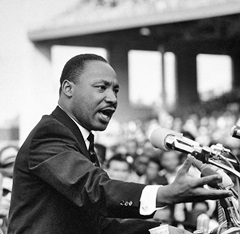
1963 – On the steps of the Lincoln Memorial in Washington, D.C., the African American civil rights movement reached its high-water mark when Martin Luther King, Jr., spoke to about 250,000 people attending the March on Washington for Jobs and Freedom. The demonstrators – black and white, rich and poor – came together in the nation’s capital to demand voting rights and equal opportunity for African Americans and to appeal for an end to racial segregation and discrimination.
With the statue of Abraham Lincoln towering behind him, King used the rhetorical talents he had developed as a Baptist preacher to show how, as he put it, the “Negro is still not free.”
Overwhelmed by the moment, King launched into an improvised sermon that remains one of the greatest speeches in American history.
1968 – At the Democratic convention in Chicago, tens of thousands of Anti-Vietnam war protesters battled police in the streets. Richard Daley, the mayor of Chicago, called in 15,000 state and federal officers together with Chicago 12,000 officers to control the streets.
As the situation worsened, television cameras were on hand as police used tear gas and were beating the protesters including innocent newsmen and doctors who had come to aid the injured.

1978 – Pulitzer Prize winning author and Civil War historian Bruce Catton died at the age of 78 after a respiratory illness.
Of the many Civil War historians, Catton was arguably the most prolific and popular. Oliver Jensen, who succeeded him as editor American Heritage magazine, wrote:
“No one ever wrote American history with more easy grace, beauty and emotional power, or greater understanding of its meaning, than Bruce Catton. There is a near-magic power of imagination in Catton’s work that seemed to project him physically into the battlefields, along the dusty roads and to the campfires of another age.”
As someone passionate about history in general, and the Civil War in particular, I’d say Mr. Jensen was right.

1978 – Actor Robert Shaw died in Ireland at the age of 51 from a heart attack.
While most movie fans will remember him for his portrayal of the shark-obsessed fisherman Quint in Jaws, Shaw first became known to American audiences twenty years earlier when he starred in The Buccaneers television series.
His first major film role was in the second James Bond film From Russia with Love. Other notable films included A Man For All Seasons (he was nominated for the Academy Award for Best Supporting Actor), The Taking of Pelham One Two Three, The Sting, Force 10 from Navarone, Robin and Marian, and Avalanche Express.
Shaw Factoid: He was a prolific novelist, writing six of them, including The Man In The Glass Booth, which later became a critically acclaimed film, earning Maximilian Schell an Academy Award nomination for Best Actor. The plot was inspired by the kidnapping and trial of Adolf Eichmann, one of the major organizers of the Holocaust.

1985 – Academy Award winning actress Ruth Gordon died at the age of 88, following a stroke.
A well-known – but not particularly successful – Broadway actress early in her career, Gordon made her mark in the world of film, appearing in over 60 movies. She earned an Academy Award nomination for Inside Daisy Clover and won the Oscar for Best Supporting Actress in Rosemary’s Baby.
Ruth Factoid: Gordon and her husband, Garson Kanin, co-wrote two Spencer Tracy and Katherine Hepburn films (Adams Rib and Pat and Mike) and were nominated for Best Screenplay Academy Awards for both.
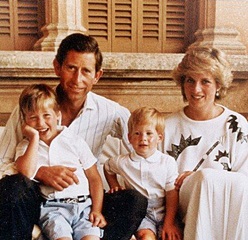
1996 – After four years of separation, Charles, Prince of Wales and heir to the British throne, and his wife, Princess Diana, formally divorced.
Fifteen years earlier, nearly one billion television viewers in 74 countries tuned in to witness their marriage in a grand ceremony at St. Paul’s Cathedral. In the presence of 2,650 guests, the couple’s romance was, for the moment, the envy of the world.
In exchange for a generous settlement, and the right to retain her apartments at Kensington Palace and her title of “Princess of Wales,” Diana agreed to relinquish the title of “Her Royal Highness” and any future claims to the British throne.

2022 – A 1952 Topps Mickey Mantle – the “finest known example” of a 1952 Topps Mantle – was sold with Heritage Auctions for $12.6 million including buyer’s premium. It’s the most ever paid for any sports item, card or memorabilia.
Compiled by Ray Lemire ©2023 RayLemire.com / Streamingoldies.com. All Rights Reserved.
After a testament to man’s inhumanity to man…horrifying, we celebrate a better side in the arts/entertainment sector
Back when my late husband’s mother threw away his trading cards including Mickey Mantle!
Thank you, Mary Helen 🥰
My parents’ home burned down in 1972. I was no longer living there but my baseball collection (along with several guitars) was lost. I’m sure your husband felt the same way I did …sick..
We visited Emmett Till’s casket in DC. So incredibly powerful.
An absolute tragedy.